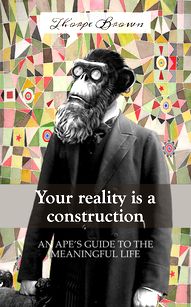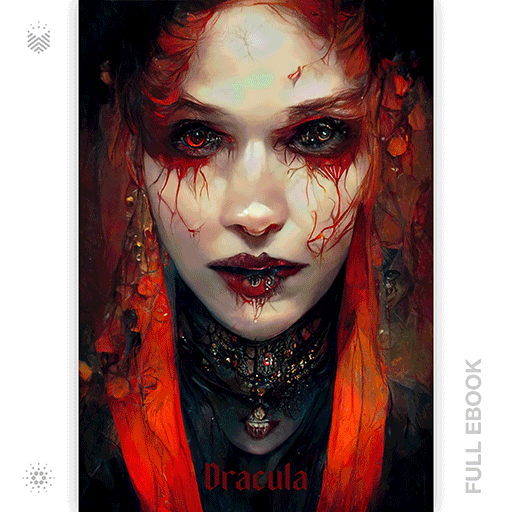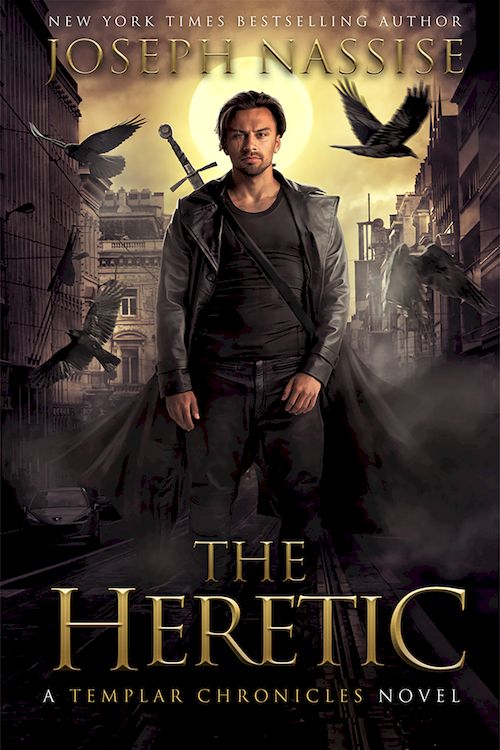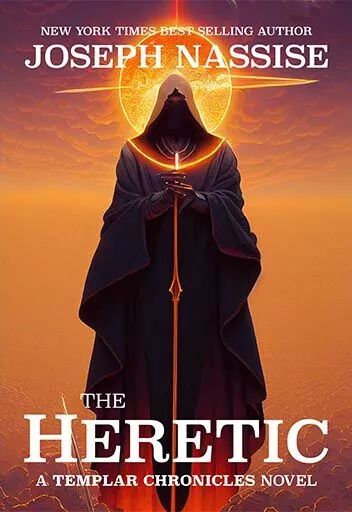October 16th, 2022
My news story about Book.io has just been published in Publishers Weekly (PW), in the weekly print edition and online. It was prompted by the news that Ingram has made an investment in the company, and anything that Ingram invests in is going to draw the publishing industry’s attention. (And now, a day after this was posted, another high-profile investment.)

The article was uniquely challenging to write because it’s just so damn complicated. Everything about Web3, blockchain, cryptocurrencies and NFTs is complicated. So complicated that even after many hours of reading and talking with smart people I can’t claim to be any kind of authority.
There are so few publishing people who can go deep on this stuff – I know I’m not alone here. A lot of articles on these topics take at least a stab at explaining what it all means. If the concept is something like metadata you can spill a cursory definition into a sentence or two. Not so with blockchain and NFTs. A half-decent explanation fills pages.
Bill Rosenblatt’s April 2021 column in Publishers Weekly, Could NFTs Work in Publishing? is a good starting point to refresh yourself on the arcana of these fast-evolving technologies. Bill also wrote a separate piece just on blockchain, and another on the intersection of NFTs and DRM.
Joanna Penn has been following blockchain and NFTs for several years now, mainly from an author’s perspective, and has published multiple posts and podcasts on these topics, which you’ll find here.
There’s also an excellent piece of reporting by Elle Griffin in Esquire, The Crypto Revolution Wants to Reimagine Books. Griffin focuses on several aspects of literary NFTs that haven’t been much covered elsewhere: the idea of being a “shareholder” in a book project, the opportunity around digital resale, the community aspects, the technical complexity, and an author’s view of the opportunity. Check it out.
I had to tell Book.io’s story in PW without these background links. You develop a technique of just sort of gliding over things, hoping the reader won’t stumble too badly.
I was helped by the fact that Book.io’s CEO, Josh Stone, is really smart and explains things (pretty) clearly, and when I didn’t understand something he was quick to follow up in an email.
I’ll take a short break in this blog post to suggest reading the PW piece so that I don’t have to repeat it here. I want to be able to expand on the story in this post – you just can’t fit all the good stuff into an 800-word magazine news story. And you need to (mostly) keep your opinions to yourself.
As some of my colleagues know, I’m deep into a project of collecting data on book publishing-related startups, and have a database of over 1300 companies. Remarkably, 33 of those already lay claim to offering NFTs, or, at a minimum, some service enabled by the blockchain.
So How Important is Book.io?
Without knowing what all the other 32 blockchain/NFT startups are up to, I feel pretty confident in suggesting that you should be paying close attention to Book.io. Start with money (a very good place to start). The company is minting cash while minting tokens, and, Stone assures me, Book.io is already profitable – in what is probably record time for a book publishing startup.

For any sort of new publishing venture this is remarkable. It’s supposed to take years. In the PW article I write that all of its “12 titles… have sold out, some in as few as 11 seconds.” The preset prices for most of the books have been 49 ADA. ADA was worth +/- 50 cents from May to September, so the “retail” prices were in the $25 dollar range. (More on the ADA currency below.) And, as I point out in the article, all of the books quickly migrated to NFT resale marketplaces (such as the JPG Store), where some have been trading at substantial price premiums.
Since writing that article just a few days ago I note three things, one minor and two perhaps major. First, there are 11 titles so far issued by Book.io, not 12 (don’t know how I miscounted). Then, I see today, that the two most recent titles have not sold out. Further, a title published last week, Thorpe Brown’s Your Reality is a Construction, is trading today on the resale market below its offering price. I’m not sure quite what to make of that – I hope someone will comment below. (October 24 update: all of the titles currently published by Book.io have sold out.)
NFTs Aren’t Easy
The second reason I’m keen on Book.io is that they’re thinking through some of the real issues facing NFT publishing today, with an eye on the broader ecosystem. They are very focused both on authors and on publishers – according to Stone, the company is in discussion with “all five of the major publishers” and “three dozen other publishers.” While most of their efforts thus far have been reprints of old classics, they’ve also begun to publish living authors, in some cases NFT-based reprints of existing in-print titles, but also a couple of originals.
Complexity Kills
A third reason for looking at Book.io is that Stone fully appreciates how difficult it is for the average user to navigate buying an NFT on Book.io (and, I assume, just about anywhere else). He’s not in denial, the way some techies can be.
I described part of the navigational process in the PW article. Here’s the full description, too long for the space available in the magazine. It’s based in part on instructions found on the Book.io website, and in part on my experience:
To purchase a digital book you need first to convert some dollars into Cardano blockchain ADA. To buy ADA you need to register on a cryptocurrency exchange platform, of which there are many, though Book.io recommends Coinbase. Cryptocurrency exchange platforms hold your crypto assets in a “custodial wallet.” And so next you need to send your newly-acquired ADA from Coinbase to a wallet which you own – this becomes the vehicle for transferring ADA to Book.io when you’re ready to make a purchase.
This “light” wallet is created with another vendor – in this case Book.io recommends Eternl.io. You set up your wallet via a browser extension or an app, protected by 24 unique words that must be entered in a given order to access your currency. And then you go back to Coinbase to transfer the ADA you’ve purchased into your Eternl wallet. Finally you connect your Eternl wallet to something called dApps (decentralized applications). Now, you can buy an NFT book on Book.io.

While writing the article, I realized that I had an opportunity to join the Book.io NFT party: on October 12 at 5 pm Eastern time, the pseudonymous Thorpe Brown’s Your Reality is a Construction: An Ape’s Guide to the Meaningful Life was to be minted in an edition of 2000 numbered ebooks (with 16 AI-generated unique cover designs) at a price of 55 ADA. I thought that could add spice to my PW article and decided I’d participate in the auction. Although I’d followed all of the steps described above, and also joined The Ape Society (don’t ask), two attempts to fund different crypto accounts failed, and I missed the deadline.
And now I’m having a world of heartache trying to get my money back from Coinbase.
Plastic Instead
Stone recognizes that this path is too complex, and will have to be greatly simplified.
Book.io plans to migrate beyond cryptocurrencies and accept credit cards. Stone wrote to me that “our ultimate goal is to move to predominantly credit card sales because we are wanting to reach a mass audience that is likely not familiar with crypto.” (Also he notes, “credit card payments are easier on the regulatory side,” the “regulatory side” being a huge headache right now in the world of crypto.)
“It’s a little cumbersome now,” he continued, “and we have been testing with some alternate credit card paths. In the coming months we will be pushing users to a simplified checkout experience that is (U.S. dollar focused), but will still allow users to checkout with cryptocurrencies if they want.”
The Crypto Crowd
So, if the current path is too damn complicated, then who is buying these book NFTs? “We have been centered on the crypto audience,” Stone acknowledges. Yet “the crypto community is a bubble,” he says. A major challenge Book.io faces, one that’s top of mind, is “how do you get outside of the bubble?” He sees that there are “one billion people buying ebooks, versus one million who are crypto enthusiasts.” Book.io is planning to reach the billion.
DRM
A fourth reason that Book.io fascinates me is their approach to DRM. DRM on blockchain is a big topic – Google it and weep. My understanding is so very limited. But Stone points out that there is a real DRM problem for ebooks on a blockchain. “The problem with other NFT publishing systems is that the file is uploaded and can be copied umpteen times. You cannot undo it. You can never undo it,” Stone cautions. Book.io uses what Stone calls “Decentralized Encrypted Assets” (or “DEA”) which “recompiles on the client side,” making it impossible to just download and redistribute the digital file. Or so I understand it. “These are not EPUBs, they are programmable books,” Stone says.
The copyright page of the Book.io Gutenberg Bible includes the text: “Everything inside this book is fully decentralized: all text, images, and video. There is no central database behind any of the contents of this book.”
A Problem Solved?
A fifth reason for checking out Book.io is that it’s addressing the drawback in being restricted to a single blockchain and/or to a single digital currency. Stone says that “what will quickly separate us (from the competition) is that we will be multi-chain… a dozen different chains… we are going to be platform-agnostic, blockchain-agnostic.” Further, while they currently accept a single digital currency, Cardano, Book.io will soon welcome Ethereum and other cryptocurrencies. I think this is a good thing…. it sounds like it is.
Cryptocurrencies Redux
Let’s talk a little more about Cardano and cryptocurrencies. As I point out in the PW article, Cardano’s currency (ADA) is experiencing the same valuation issues facing Ethereum and Bitcoin, and, I wrote, “like those currencies its value has recently taken a nosedive, dropping by more than 80% in the past year, nearly 25% in the past month.” Is Cardano suffering some unique problems that are accelerating its devaluation? I’ve googled that question and can’t decode the feedback. Both Ethereum and Bitcoin have lost slightly less value than Cardano in the last 12 months. Is that meaningful? I’m not sure.

Lastly, on the topic of cryptocurrency, there’s Book.io’s own crypto offering called “$BOOK Tokens.” In the article I summarize their value as “a unique cryptocurrency that is earned by readers based solely on the amount read, an intriguing way to incentivize readers to become more deeply involved with authors and their work.” But there’s much more to $BOOK tokens than that. Go to the bottom of Book.io’s homepage to delve deeper.
You’ll see that on June 2, 2021, “10 billion $BOOK Token were minted as native-based Cardano tokens.” 70% of these tokens have been allocated for internal use by Book.io, for tech development, fundraising and for team & acquisitions. 30% are slotted for readers to earn. It’s unclear to me how this will play out – will readers actually gain significant moolah over time by engaging heavily with Book.io’s publications, or is it just a gesture? More importantly, even if $BOOK Tokens never gain much more value than grocery store coupons, will readers react to the incentive – has Book.io invented a new system to instill deeper reader engagement?
What’s in a Picture?
I tread into murky dangerous waters here. What strikes me as a strange/unusual/call-it-what-you-will/ aspect of this whole book-NFT game is rarity. How do you make an infinitely reproducible digital file rare? The blockchain allows you to enforce rarity by assigning unique digital addresses. It’s the same object, but resides in a different home.
As so you can create 100 instances of a particular digital file, declare it to be THE official digital file, as recognized by the “artist” (writer, photographer, musician, whatever), and the blockchain records those 100 distinct digital entities. Every other instance is a “fake.” But only because of its ethereal address. Other copies of the file might read/appear/sound identical, but without their unique blockchain address, they will not have been certified by the artist as part of that limited edition. (Or so I understand it.)
There are numerous critiques of the NFT bubble, but that one stands out for me. You and I can each have a copy of the same digital file, but yours is worth thousands of dollars more because someone has created an artificial limit. Apologists compare this to limited editions of photographic or lithographic prints. But in those cases an artist creates 50 copies, signs and numbers them, and that’s it. I suppose a forger could scan the image and scan the signature, but the fake could be easily detected. Only those 50 physical copies are genuine.

NFTs are artificial scarcity.
How do you get around this? With a bit of sleight of hand: use AI to generate a variety of visuals. Each image can still be reproduced pixel for pixel. But at least now there are a lot of different images, making the ubiquitous seem somewhat scarce. Follow the Bored Ape Yacht Club story for more on this aspect of the NFT ecosystem.
So how do you imitate scarcity when your artwork is a novel consisting of a string of 75,000 words? You can hardly mix up the words, telling the book buyer that their copy of the ebook will contain some words in a different order than in the master text. Perhaps you could add the buyer’s name to the digital file, but that can easily be altered. No, there’s no upside in screwing with the text itself.
And so a company like Book.io can evoke rarity by generating a string of different covers with AI-generated art. Each Book.io NFT features a selection of covers spit out by an algorithm. There’s no need to do a separate cover for every single book. Just having more than one version denotes scarcity – they’re not all the same. For a NFT edition of 1000 tokens, you can offer, let’s say, 10 different covers. The first design is a one off. The second is an “edition” of three or four copies. Version three has a dozen addresses, and version ten is the most plentiful – with 600 instances on the market.
It’s bogus, of course, still the same book, and the “unique” cover can be duplicated on your computer by holding the “command” key while pressing the letter “c”. But so far it’s proving to be a winning formula.
Book.io mixes it up further with its DRM-ish DEA, described above. The ereader dApp prevents copying a single file of digital assets that comprise the entire publication. I can copy the assets individually – the images are downloadable with a right-click, and the text can be copied and pasted in another file. But the full assets can only be retrieved on Book.io’s ereader dApp. That is a qualitative difference from an NFT of an EPUB file.
The Author’s Story
One of the pleasures of writing the PW article was interviewing two authors whose work is about to debut on Book.io, Gina Azzi and Joe Nassise. There wasn’t space for both; Azzi made it into my article. She’s a pleasure to interview, and clearly delights in both her writing and in her reader community.
Joe Nassise, as Azzi acknowledges, has a deeper understanding of what NFTs could mean to independent authors. (He’s been published by the Big 5, but has mostly reclaimed his copyrights and now self-publishes through his Harbinger Books imprint.) Nassise has written thoughtfully on the topic on his blog. His post on Book.io’s competitors offers an author’s insights on some of the current players.

Nassise is excited about where things are heading in this new world of NFT publishing. “Blockchain,” he tells me, “is a world-changing technology, just like the Internet was. You buy a book on Amazon, no one thinks about how all that works. Blockchain will get to the same point.”
Nassise, in his early 50s, is the author of more than 40 novels, in the genre of “supernatural adventure and urban fantasy,” or, as Amazon sees it, occult and dark fantasy horror.
His The Heretic, the first in the eight-part Templar Chronicles, has 965 ratings on Amazon, most of them 4 or 5 stars. It’s the story of Cade Williams, commander of the Echo Team, an elite squad of monster-hunting modern Templar knights. The Kindle ebook retails for $6.99.
The Heretic will also be Nassise’s first Book.io title, due shortly in an edition of 5,000 copies. It will have the same text as the original, but there will be variations in the artwork: 117 different pieces of art organized into 10 categories. They will all be priced identically; it’s random which one the buyer receives. (October 24 update: they reduced the mint to 2,764 copies, all of which sold within in 45 seconds at a price of 55 ADA.)

“They call it a lottery,” Nassise says. “That adds excitement to the buying process. It’s kind of an event.” The artwork, he says, “is what makes them collectible.”
Nassise sees a corollary in print book collecting. “I’ve been collecting physical print special editions for years,” he says.
The revenue split with Book.io is 70% for the author, 30% for the publisher, the same as it is with Amazon for Kindle ebooks. But Amazon drops its royalty to 35% for ebooks priced above $9.99. That’s one of the differentiating factors that attracts Nassise to the Book.io platform. “I don’t have to limit my price to $9.99,” he says. “This isn’t a race to the bottom.”
Author Communities
Both Gina Azzi and Joe Nassise talk optimistically of the community aspect that NFTs and the blockchain afford. “There’s so many things we can do with reader engagement,” Azzi says. On the one hand, authors “know” who all their book buyers are – they’re recorded on the blockchain and can be contacted via their encrypted not-personally-identifiable addresses. In many cases buyers will be invited to special reader communities, often hosted on Discord.
On his blog Nassise writes that “blockchain technology allows me to offer extras directly to the reader as part of the product in a way I haven’t been able to before.”
Naysayers of NFTs and blockchain point out that, truth be told, there are several ways in which all of this can be done already. But, I think, the structure that a company like Book.io brings to the table organizes these features into a more coherent whole. “You’re talking about all of these aspects and rolling them all into one platform,” Azzi says.
Where to Next?
Book.io is off to a tremendous start, and I’ll be watching the company closely. Josh Stone inspires confidence. Ingram’s financial endorsement matters.
The NFT craze is clearly on shaky grounds, although, who knows, NFTs could morph into a more robust asset, not just a passing fad.
And Book.io is playing a longer game, well past the current crypto craze. So what happens if buyers are no longer turning to Book.io just for pretty covers on genre titles? Is this the next phase in self-publishing? Is it augmentative, or a replacement? Your comments are welcome.